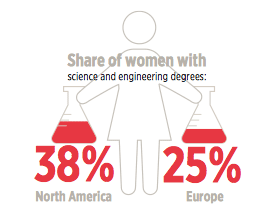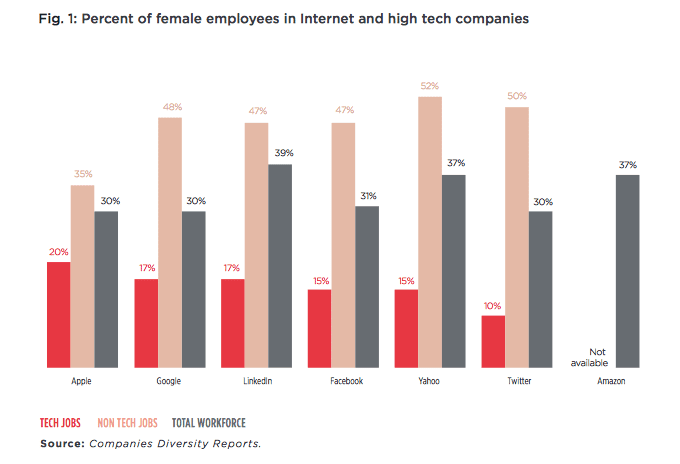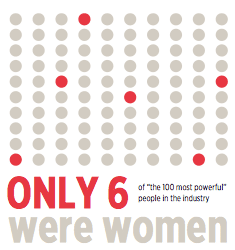As a follow-up to last month’s article related to connected women, or the lack thereof in emerging markets, we now move to the second in this series of topics from the GSMA Connected Women program – diversity in the telecommunications industry. Although the statistics were less than desirable, there were some areas showing improvements and forward momentum. There is still a great deal of work to be done, especially in STEM-related functions.
 The GSMA and A.T. Kearney conducted a global study of 54 companies during the last quarter of 2014. The methodology included the following key criteria:
The GSMA and A.T. Kearney conducted a global study of 54 companies during the last quarter of 2014. The methodology included the following key criteria:
- Eighty-five percent of the companies surveyed were in the telecommunications industry and the remaining 15% of the companies surveyed were in the Internet or high-tech industries.
- Telecommunications companies could have fixed and/or mobile networks.
- The companies averaged 12,900 employees.
- The companies were geographically distributed as follows – Asia Pacific (21%), Europe (19%), Middle East (19%), Latin America (9%), North America (15%) and Africa (17%).
- A combination of expert interviews, case studies and company interviews were utilized to gather the data for the report.
Some of the key findings of the research are presented below. The entire report can be downloaded via this link.
- Female participation in the telecommunications workforce varies widely by company, ranging from 10% to 52% among those sampled.
- In three-quarters of the telecommunications companies surveyed, women accounted for less than 40% of the workforce.
- There are notable regional differences among sampled companies, with those in the Americas outperforming their counterparts elsewhere in terms of female representation.
- Among those surveyed in all regions except North America, women (on average) held less than 20% of senior leadership positions.
- Almost 75% of men placed high importance on an employer’s policy on diversity, equality and workforce inclusion when deciding whether or not to work for them.

 I had the opportunity to dig a little deeper into the report with Claire Sibthorpe, director of the Connected Women program.
I had the opportunity to dig a little deeper into the report with Claire Sibthorpe, director of the Connected Women program.
First, I asked what findings in the report were most unexpected for her. Sibthorpe said that although the report highlights the significant benefits to companies for having a gender-diverse workforce, studies reveal that gender-diverse companies are 45% more likely to improve market share, achieve 53% higher returns on equity and are 70% more likely to report successfully capturing new markets. Additionally, companies that tap into women in the workplace can improve the likelihood of success for new products and services by 144%; but there are still significant challenges to address.
One of the challenges identified was around data. Specifically that closely monitoring the impact of individual initiatives requires frequently collecting data on key indicators. The report makes the point that companies need to ensure they are collecting and analyzing gender-disaggregated data in areas such as employee attraction, recruitment, retention and promotion, and that there is the need for industrywide collaboration and transparency.
There’s a great deal of discussion these days about the lack of women in STEM programs during school. I asked Sibthorpe if she agreed that the problem really does begin in school, and if so, is the issue that women are not studying these topics or is it that they are unable to find employment in the telecommunications industry even though they have the appropriate degree? Her view was that the problem is at all stages in the career path. There are fewer girls studying STEM and other qualifications, and numbers from the U.S. show that the number of women receiving computer science degrees has decreased since 1985.
As the report highlights, there is also a need to improve the attraction and recruitment of women into this sector, as well as a focus on their talent management and promotion. It is often described as a “leaky pipeline,” with girls and women not only underrepresented in the world of technology but also dropping out at every stage.
For example, last month the Anita Borg Institute released its annual Top Companies for Women Technologists Index. It found that there is a 50% decline in female representation from entry-level workers to those in executive positions, and that those women who do choose to enter tech are later choosing to leave it at a rate that is twice that of men.
One of the discussions I’ve heard when participating in networking functions aimed at finding ways to help with these challenges is the participation of men. I wholeheartedly agree with this. The workforce is made up of men and women, obviously, and bringing about change requires participation on both sides, leading to the topic of corporate culture. Existing studies indicate there is a range of reasons for this gender gap in the workforce. Sibthorpe was recently part of a panel on “Empowering Women to Innovate through Technology” at the WSIS Forum High Level Dialogue, which included an interesting discussion on the issue and highlighted some of the challenges, including “unconscious bias.” She explained that while this issue applies globally, it is one of the specific challenges that will be more or less acute depending on the culture or company. That is why it is very important for companies to regularly collect and review data. If they can understand how well they are doing on factors such as recruitment, retention and promotion, they could be able to address their specific challenges and make changes to improve gender diversity at all levels.
 There are also the glass ceiling and “token woman” topics. Even in companies with good diversity at lower levels it seems there are still many glass ceilings remaining. I wondered what reasons might be driving this – lack of mentors; lack of focus on women for senior jobs outside traditional human resource and marketing roles; and other topics? Sibthorpe felt it is striking that only six of “the 100 most powerful” people in the industry on the 2014 Global Telecoms Business Power100 list were women. There are many reasons why the gender gap becomes more pronounced with seniority, and as the report mentions “holistic strategies focused on transforming the company culture and mindset are essential to cultivating wider change.” There is clearly a need for not just more female role models, but also more leaders who are visibly championing this issue and who are proactively putting in measures to drive forward change in their organizations.
There are also the glass ceiling and “token woman” topics. Even in companies with good diversity at lower levels it seems there are still many glass ceilings remaining. I wondered what reasons might be driving this – lack of mentors; lack of focus on women for senior jobs outside traditional human resource and marketing roles; and other topics? Sibthorpe felt it is striking that only six of “the 100 most powerful” people in the industry on the 2014 Global Telecoms Business Power100 list were women. There are many reasons why the gender gap becomes more pronounced with seniority, and as the report mentions “holistic strategies focused on transforming the company culture and mindset are essential to cultivating wider change.” There is clearly a need for not just more female role models, but also more leaders who are visibly championing this issue and who are proactively putting in measures to drive forward change in their organizations.
Lastly, I asked for some examples of the role the GSMA is playing to help with these challenges. The GSMA has established the Connected Women program, which is working with industry and development partners to promote the greater inclusion of women at all points in the ecosystem. The goals of the program are to raise awareness and share insights on gender diversity in the telecommunications sector, and, as an industry association, has been well positioned to bring together industry stakeholders to share best practices and drive forward action. There are initiatives such as the ITU’s Girls in ICT Day, which the GSMA recently supported by partnering with an East London school and FabLab London to provide local schoolgirls with the opportunity to gain hands-on experiences and insights from successful leaders in technology, as well as to encourage them to consider careers in ICT.
Claire Sibthorpe is the GSMA Connected Women program director. She has been working for over 15 years in the public and international development sectors on social policy and service delivery with a focus on information and communications technology policy and practice. Sibthorpe has worked with governments, international agencies and NGOs in Africa, Asia and the U.K. This has included working as a senior consultant at Atos KPMG Consulting where she managed the Catalysing Access to ICT in Africa program, and at the International Development Research Centre on initiatives aimed at empowering communities to apply ICTs to their own social and economic development.
Like what you read? Follow me on twitter!
Claudia Bacco, Managing Director – EMEA for RCR Wireless News, has spent her entire career in telecom, IT and security. Having experience as an operator, software and hardware vendor and as a well-known industry analyst, she has many opinions on the market. She’ll be sharing those opinions along with ongoing trend analysis for RCR Wireless News.

